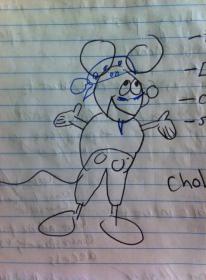I’m glad I got a chance to finally read the blog post by Chad Black of University of Tennessee-Knoxville. He lays it out very well in his two blog “charting my archive” (that explains how he’s using tools such as text mining to link the historical context of 18th century Latin American court cases then displaying the case purposes seeing if they link with the historical context of the time) and his other blog post “a long form historical narrative framework” (which he explains how going to a web coding class got him to thinking that there are many tools for Digital historians to use for museum curation and archive work, but tools for actually explaining narrative through citing evidence lack and those that do try such as ebooks and blog posts such as this one can become confusing during navigation). He goes into detail about if someone were to create one similar to that of a book to quickly jump around through cited evidence and navigation to where the user was on to back to where they needed to be would be great. One of the sites he mentions that tried to attempt this is my Civil War Professor Dr. Rubin early collaborative work from her days at the University of Virginia, “Valley of the Shadow” project. The way she explained it and walked us through it when she came in to speak to us in class was the narratives and databases that users could interact with one would walk around similarly to a virtual museum. We did not actually get a chance to get into about how was the “Valley of the Shadow” speaks to users in way of narrative. What is the take away when someone finishes looking through the project and does not have access to the accompanying book? How were the cities affected by the Civil War? I have not gotten a chance to fool around on it and as I mention in one of my previous posts you can’t actually access the old CD version. It is funny to think that when that project was first released it was “state of the art”, but as Dr. Rubin is showing with her interactive map project in Digital Humanities ideas are constantly evolving, reshaping, becoming more user friendly and ways of access are becoming more sustainable, such as her map being made on flash and accessible via web browser.

An early digital humanities project from 2003. “That focuses on two towns on opposite sides of the Civil War”
The idea of constantly changing ideas brings me to another great point the idea of the Creative Commons. Instead of no credit where credit is due the idea of the Creative commons with just a quick flash of the logo shows where as they put it on their “about” page a place where creativity can flourish. People can have a visual cue to show they are ok with one using their work, websites, songs, characters (such as “Cholo Mickey Mouse” the example from my Digital History Professor Sibaja. He would not be usable because his likeness is too much of that of Standard Mickey mouse.”) Digital Humanities have come a long way since their infancy and the primitive early interest group websites of the 90’s. As Professor Chad Black shows us digital tools can be used and applied to many areas such as displaying information actual numbers, but when it comes to the narrative element of history digital tools still lack and this is a major element when actually practicing history. The subject matter and when someone needs to barrow content the Creative Commons is there and allows them to use it anxiety free, but still it is up to the user to take the time and go through the Creative Commons process. As we go forward into our era of digital humanities I am hopeful about the possibilities.

Mickey Mouse targeted toward more urban Latino audiences. An example of what could be if the copy right of Mickey Mouse ever runs out. In a world without Creative Commons. Perhaps a Sony based character.
David, you are right on target! We need a happy medium between pure technology and books. Pure technology is great because we have all access to everything. But like you said, it can become confusing during navigation. Books on the other hand are amazing with their navigation. You know exactly where everything is and can immediately go back to a previous spot. The problem with books are that they have limited access. Each book is written on a specific subject and that is all you can ever gain from the book. The happy medium we want is the all access ability of pure technology with the intuitive navigation of a book. I like you, and Professor Rubin, believe that since technology is always evolving it will become more user-friendly and therefore gain some of the intuitiveness of a book while still keeping its all-access all-the-time abilities.
LikeLiked by 1 person